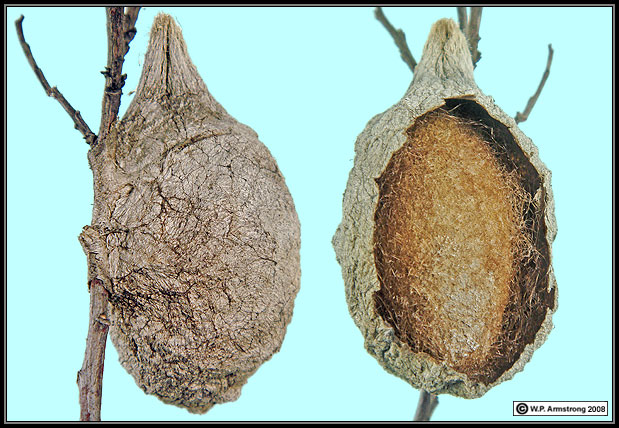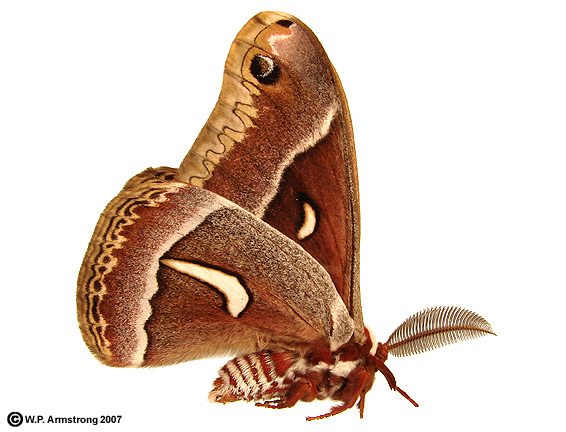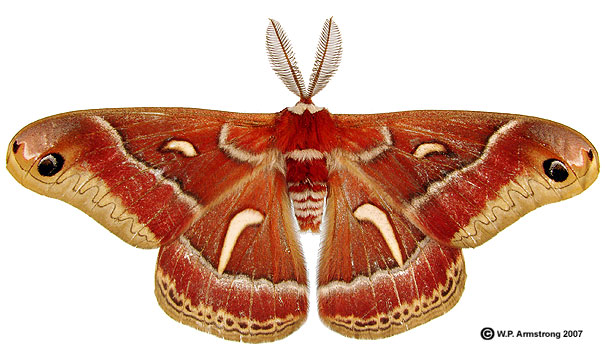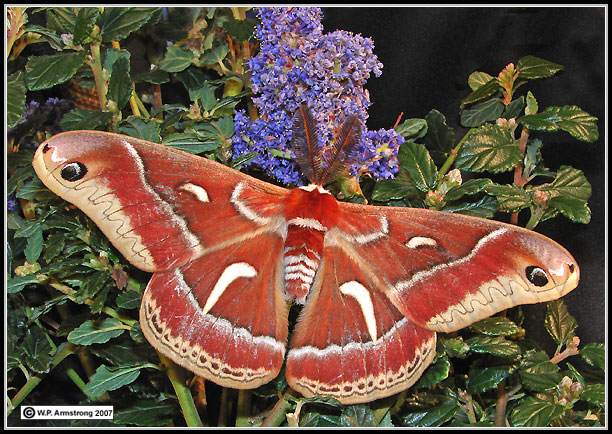|
The above ceanothus silk moth was observed visiting Starbucks across the street from CSUSM on 7 February 2007. It appears to be a male with his robust antennae. As a biologist, I felt compelled to photograph this lovely insect and write a brief synopsis about it. Its scientific binomial is Hyalophora euryalus and it belongs to the wild silk moth family Saturniidae. This family includes some of the largest and most spectacular moths in the world, particularly the tropical rain forest. The valuable textile silk comes from the larvae of a different moth family, the Bombycidae (see link below). The ceanothus silk moth lives in the nearby chaparral-covered hillsides above CSUSM. The larva (caterpillar) feeds primarily on species of California lilac (Ceanothus). Two species are native to the nearby hills, coast blue lilac (C. tomentosus ssp. olivaceous) and coast white lilac (C. verrucosus). Both of these species grow at nearby Jack's Pond Park located on La Moree Road east of CSUSM. The larvae are also known to feed on other native shrubs, including laurel sumac (Malosma laurina), mountain mahogany (Cercocarpus minutiflorus) and manzanita (Arctostaphylos) species. At maturity in the fall they grow to a length of up to four inches (10 cm) and resemble fat, light green sausages with stubby legs. The back (dorsal) side is decorated with yellowish or reddish projections (tubercles). After feeding all summer, the larva spins a flask-shaped, silken cocoon that hangs from the host shrub.

|
Ceanothus silk moth cocoon attached to branch of laurel sumac.
|
Within its cocoon, the larva transforms into a pupa. During the fall and winter months the pupa gradually undergoes metamorphosis and by late winter or early spring, an adult moth emerges from its pupal case. This is a large moth with a wing span of over five inches (13 cm). As an adult, its primary purpose is to find a member of the opposite sex and hopefully copulate. Females emit a chemical scent (pheromone) that attracts a male suitor. Adult moths have atrophied mouthparts and do not feed. They soon die after completing their sole function which is to mate and lay eggs, thus passing on their DNA and perpetuating the species. Hopefully, sufficient native chaparral will remain in this rapidly growing region of southern California to maintain a viable population of these beautiful insects.
|





